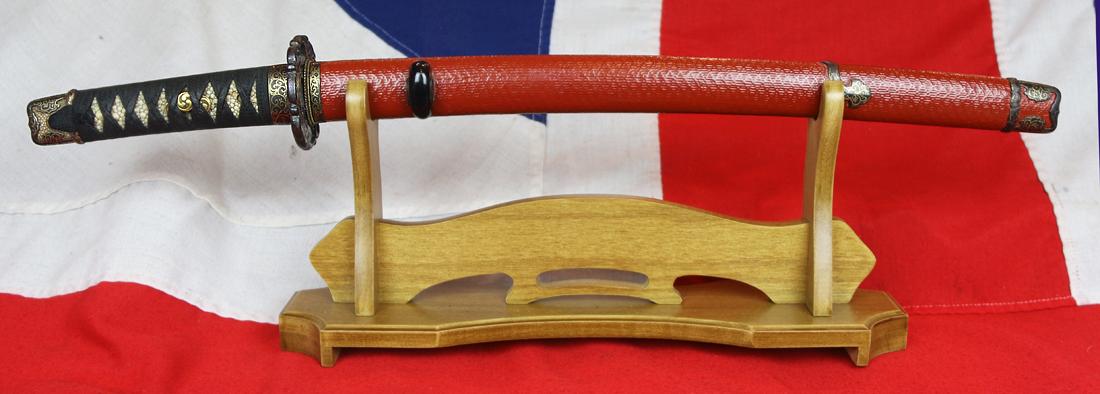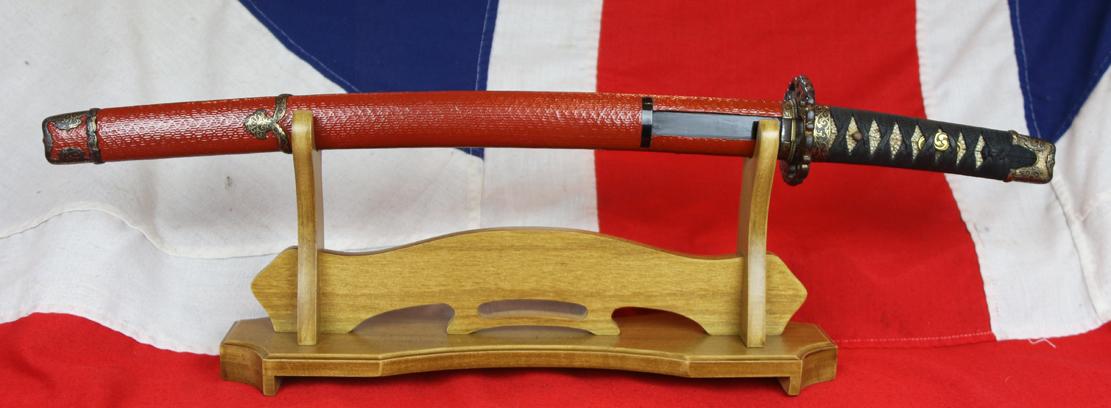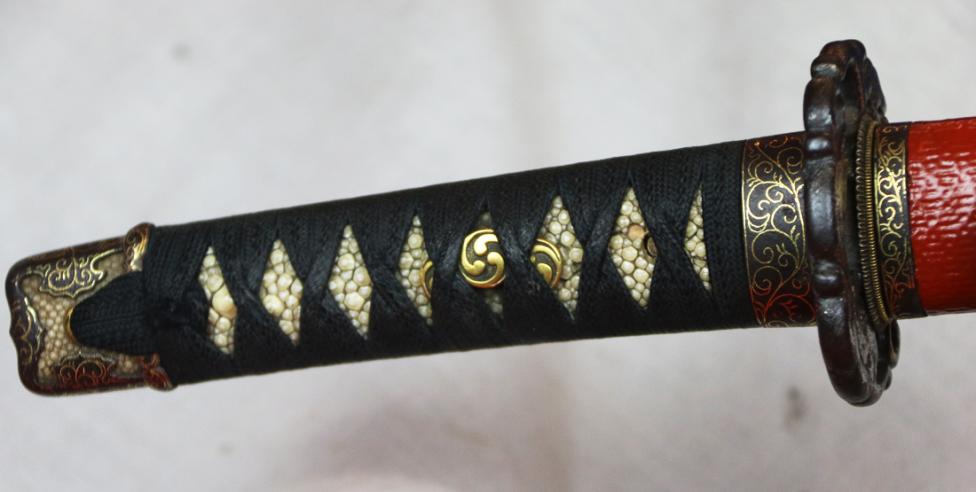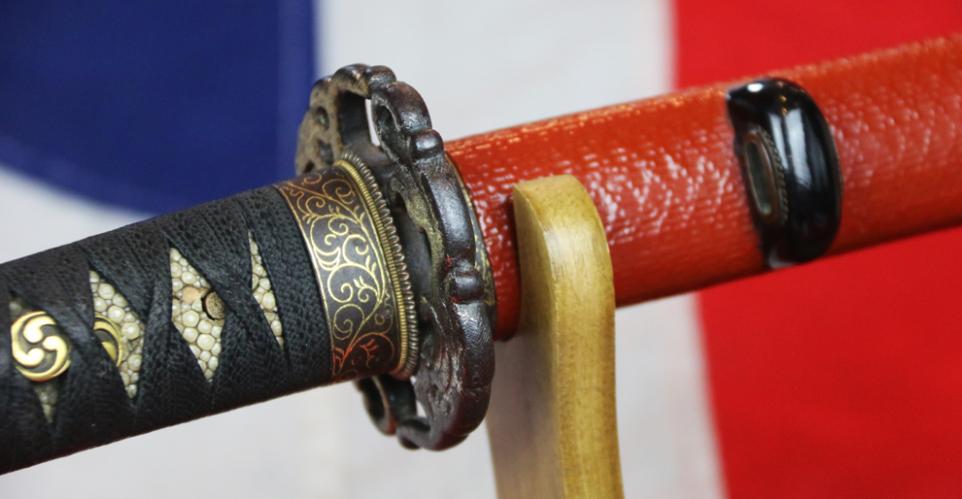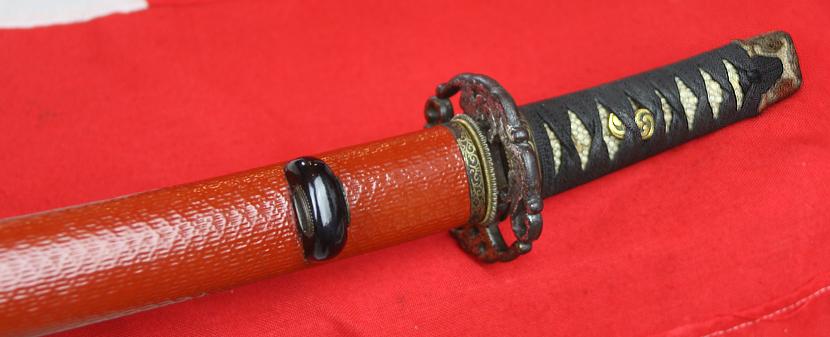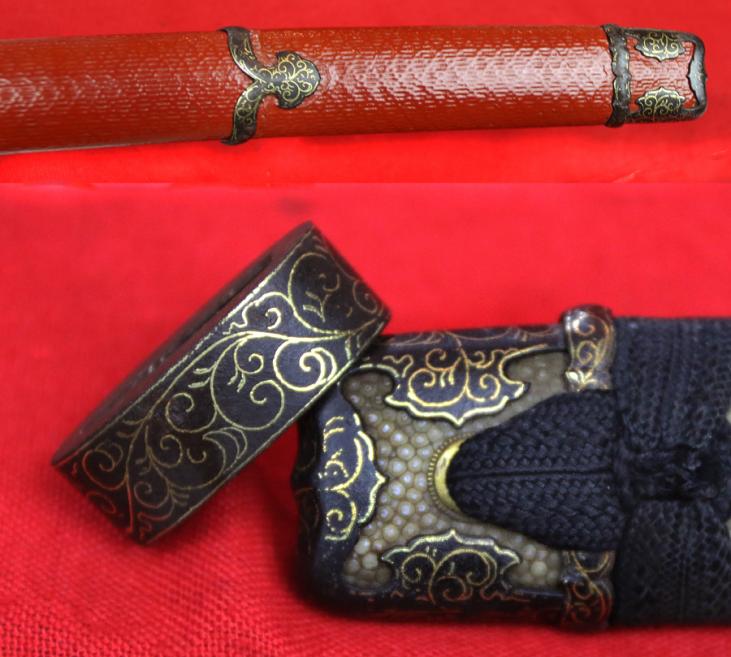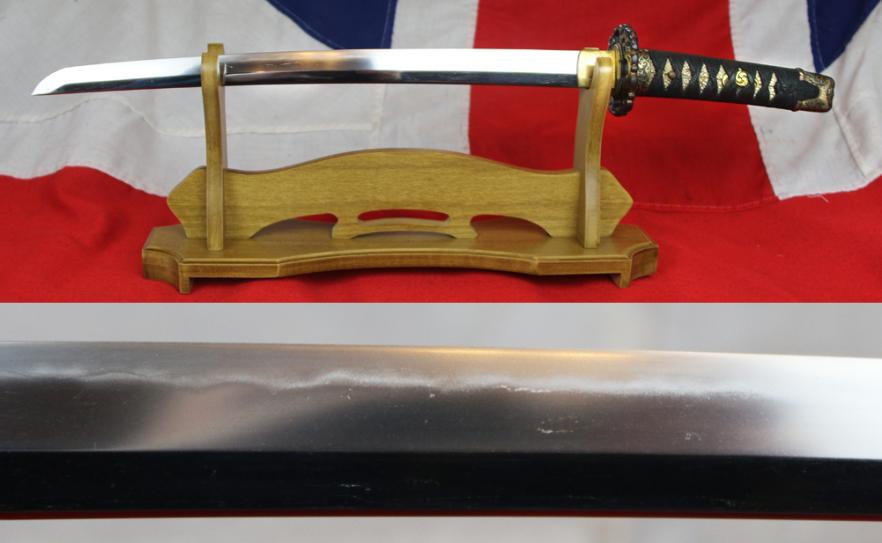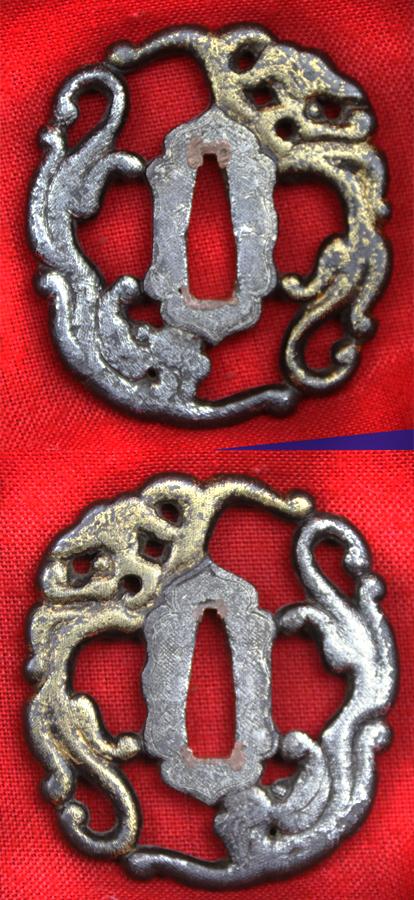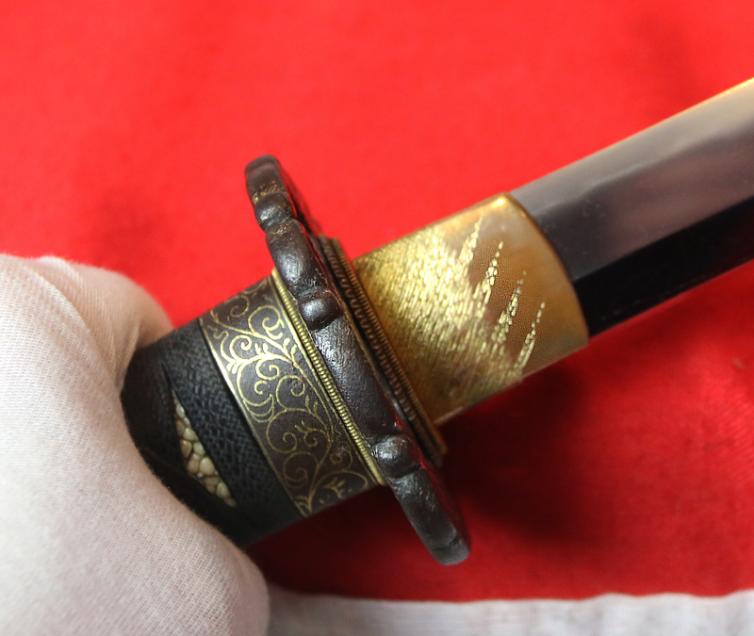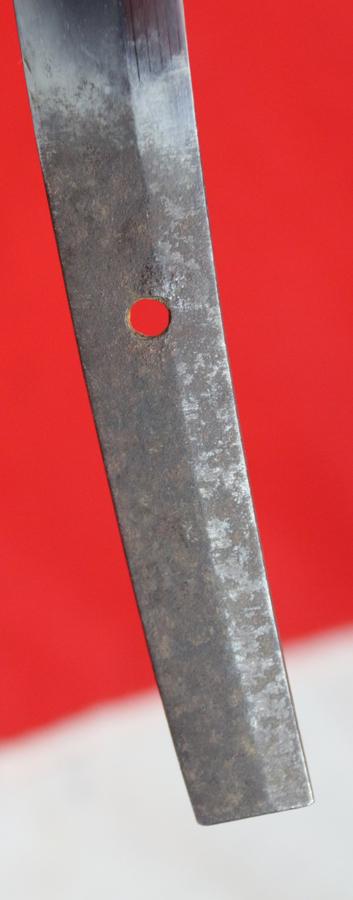A Simply Stunning Museum Quality Shinto Period Samurai Wakizashi of the Kobayakawa Clan, In Superb Han-dachi Fittings
Fully bound in fine Han-dachi form, with its tsuka with iron Higo fuchi and kabuto-gane decorated in pure gold with scrolls and tendrils, shakudo and gilt Tomoe mon, of the Kobayakawa clan, and the mon of Kobayakawa Takakage, iron sukashi tsuba chiselled and pierced with gilded and silvered dragons, contained in its fabulous textured red lacquer saya with Higo iron and pure gold inlaid mounts matching ensuite with the tsuka. Kobayakawa Takakage (小早川 隆景, 1533 – July 26, 1597) was a samurai and daimyō (feudal lord) during the Sengoku period and Azuchi–Momoyama period. He was the third son of Mōri Motonari who was adopted by the Kobayakawa clan and became its 14th clan head. He merged the two branches of the Kobayakawa, the Takehara-Kobayakawa clan (竹原小早川氏) and Numata-Kobayakawa clan (沼田小早川氏). He became an active commander of the Mōri army and he with his brother Kikkawa Motoharu became known as the “Mōri Ryōkawa", or “Mōri's Two Rivers" (毛利両川). As head of the Kobayakawa clan, he expanded the clan's territory in the Chūgoku region (western Honshū), and fought for the Mōri clan in all their campaigns
At first he opposed Oda Nobunaga and Toyotomi Hideyoshi but later swore loyalty and became a retainer of Hideyoshi who awarded him domains in Iyo Province on Shikoku and Chikuzen Province on Kyūshū, totalling 350,000 koku. Hideyoshi gave him the title Chûnagon also appointed him to the Council of Five Elders but died before Hideyoshi himself. Han-dachi originally appeared during the Muromachi period when there was a transition taking place from Tachi to katana. The sword was being worn more and more edge up when on foot, but edge down on horseback as it had always been. The handachi is a response to the need to be worn in either style. The samurai were roughly the equivalent of feudal knights. Employed by the shogun or daimyo, they were members of hereditary warrior class that followed a strict "code" that defined their clothes, armour and behaviour on the battlefield. But unlike most medieval knights, samurai warriors could read and they were well versed in Japanese art, literature and poetry.
Samurai endured for almost 700 years, from 1185 to 1867. Samurai families were considered the elite. They made up only about six percent of the population and included daimyo and the loyal soldiers who fought under them. Samurai means one who serves." Approx 26 inches long overall in saya, blade 17 inches
Code: 23560
8950.00 GBP

